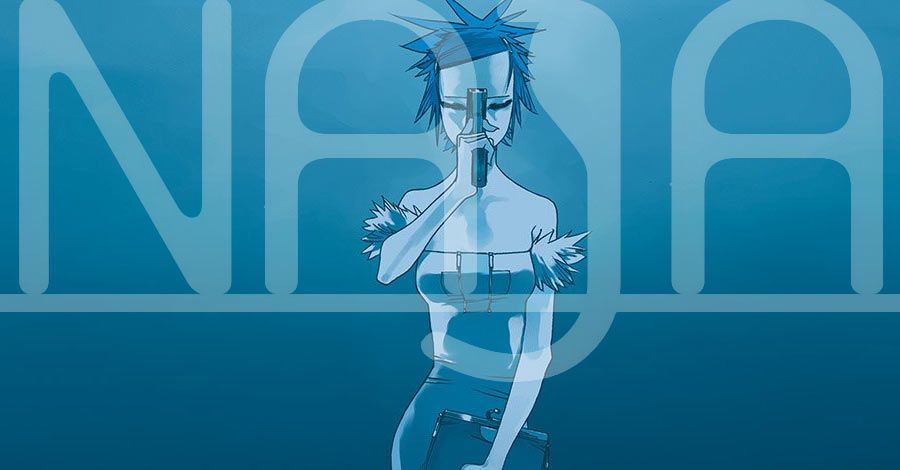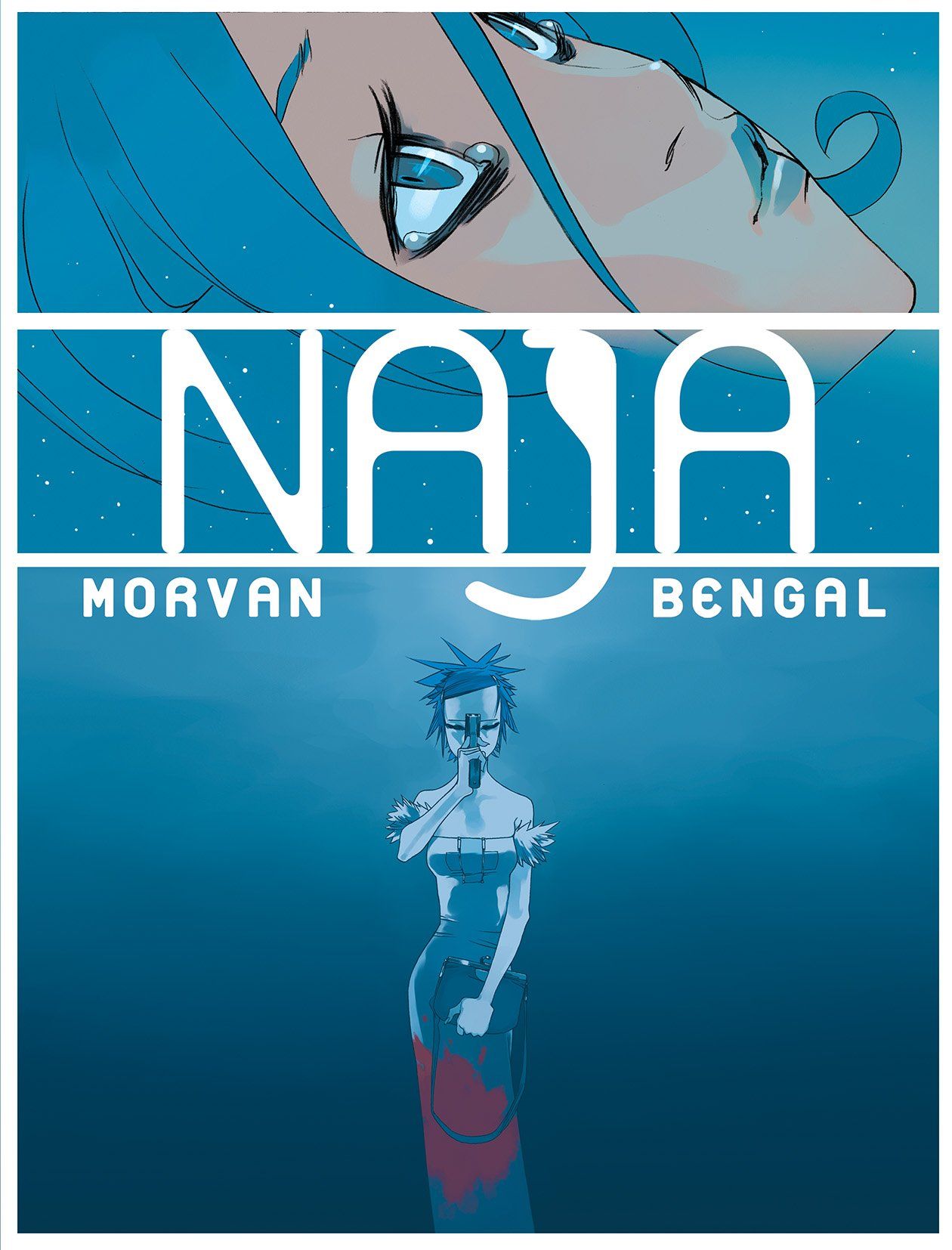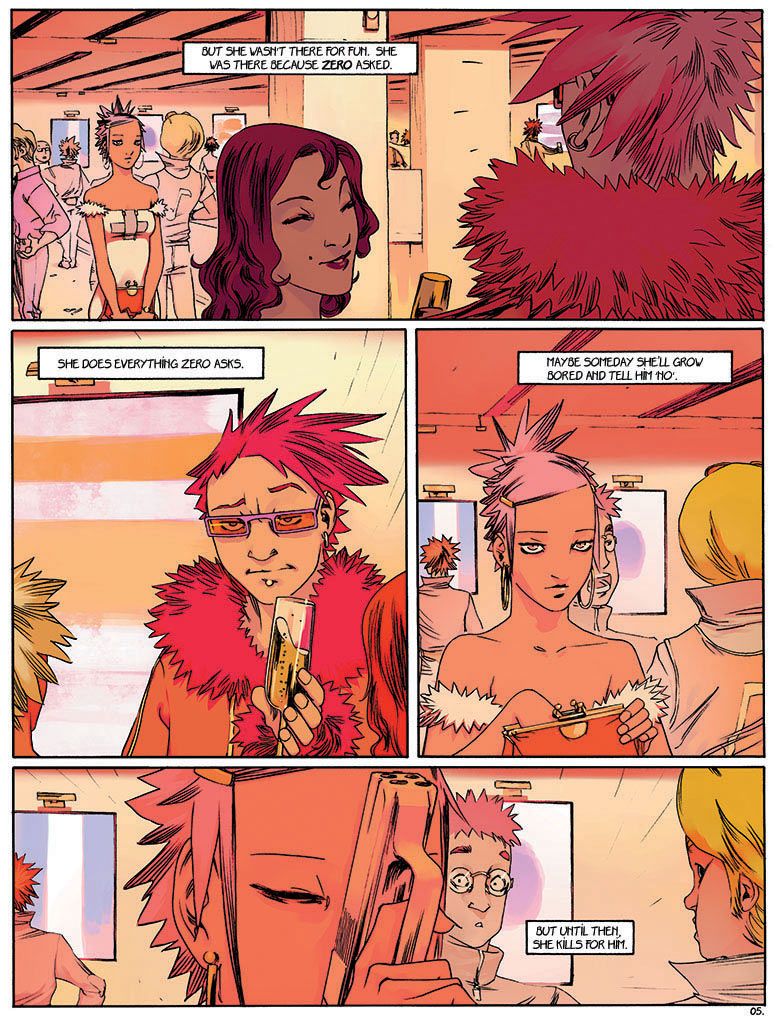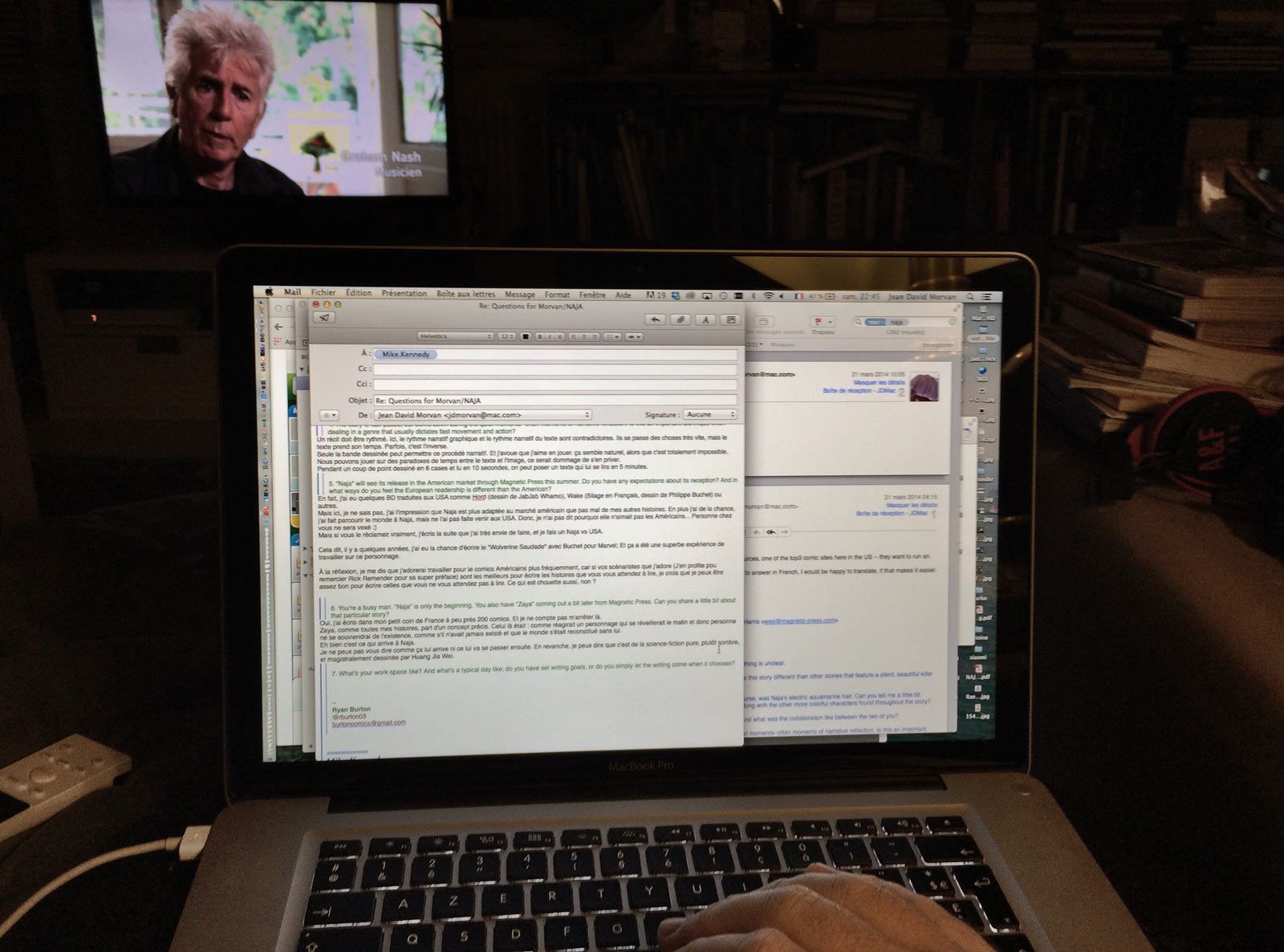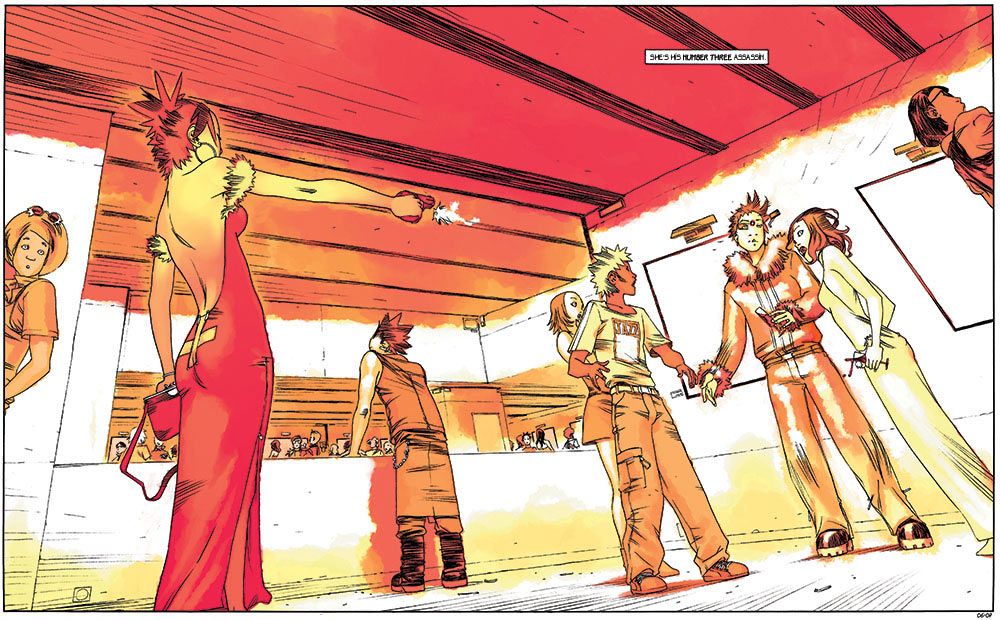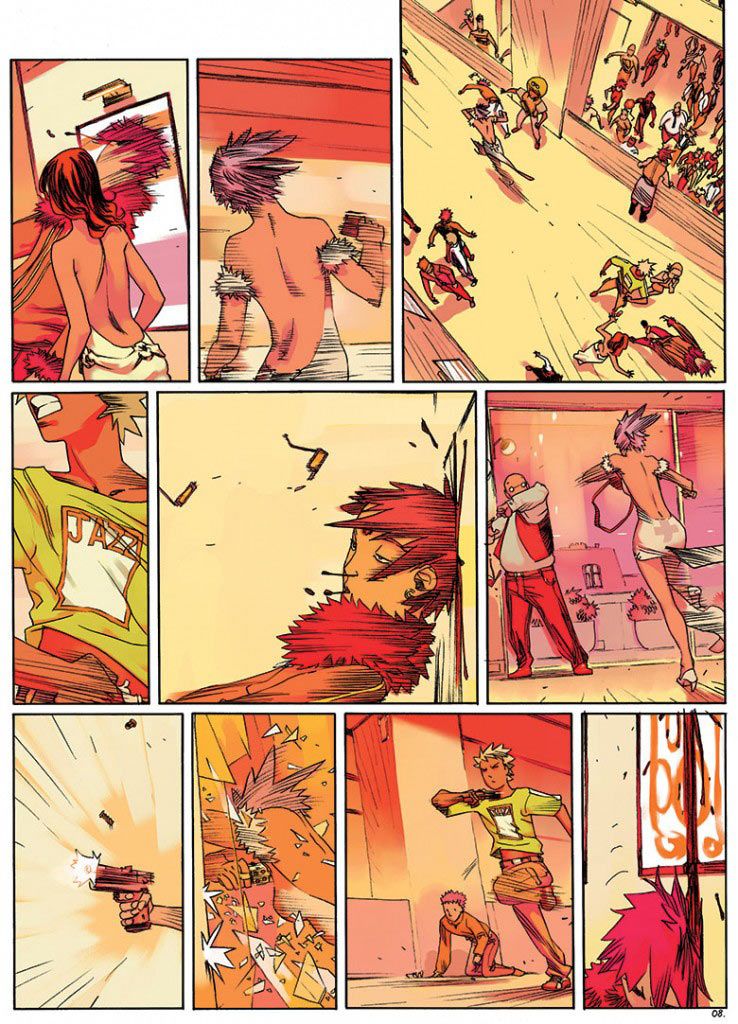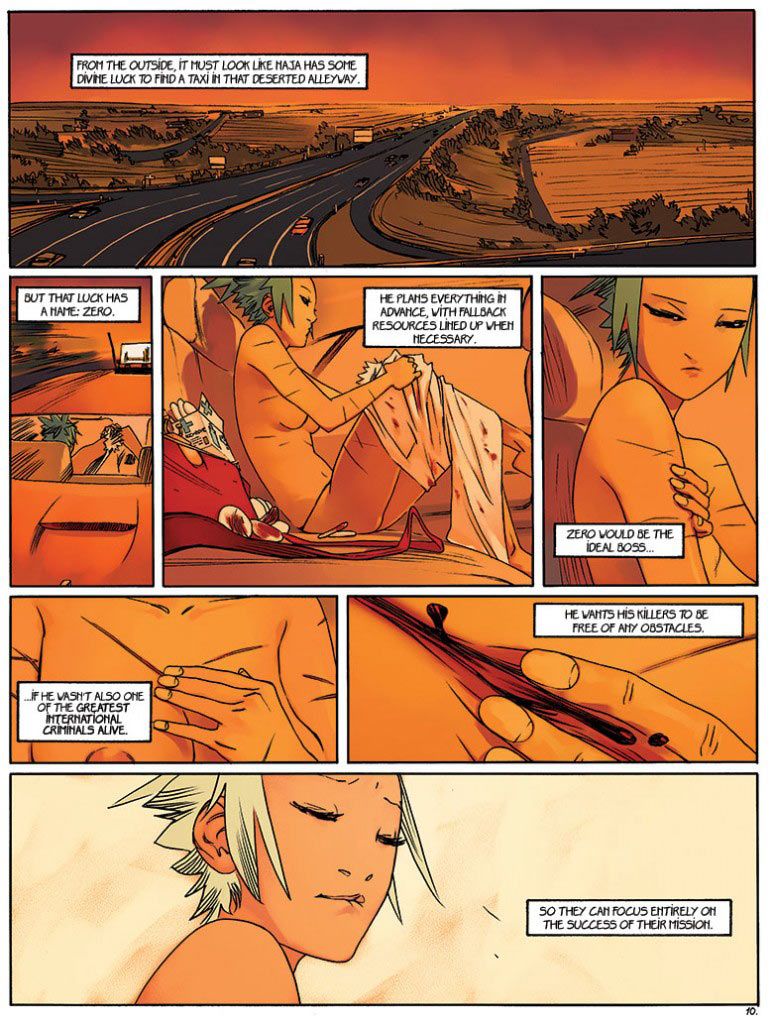New publishing house Magnetic Press is playing their cards close to their chest right now, waiting to show the hand that it hopes will make everyone pay up. One of those cards is "Naja," a 258-page hardcover silent killer-type tale written by J.D. Morvan, and illustrated by Bengal. Naja's outward appearance reflects her personality -- electric blue hair, white skin -- she cuts herself to feel pain, to feel something. So when another killer in her organization targets her for unknown reasons, she does what any pro does in her situation -- she falls off the grid and kills her way to the answers.
Magnetic Press' hardcover collection is available at the end of May, collecting the original 5-issue series that first saw print in Europe. In speaking with CBR ahead of the impending release, Morvan explained what inspired him to write the story, how close he and Bengal worked together on the comic and the ways in which he believes the American market will react to the book.
CBR News: JD, tell us about "Naja." What inspired you, and how is it different than other stories that feature a silent, beautiful killer working for a criminal organization?
J.D. Morvan: This story is different from others of the same kind, because, well, it is me who wrote it, and I wrote it especially for Bengal. I created this heroine based on an old illustration he did. I liked her lost look, and the cold atmosphere of the piece.
The basic intention was to tell the story of a killer who did not feel pain, so she looked for it by all means. It made sense, as we always look for that thing we do not have.
One day, I was coming back from Brussels by car, and a sentence came into my head: When the number 1 killer of an organization has a contract on the number 3 killer, what happens to number 2? From there, everything fell into place. I sent quite a lot of text messages to Bengal on my telephone as I drove -- it was dangerous, sure, but less than the life of a killer like Naja!
Anyway, the story was built on such risk, because I put myself in danger by writing different unconnected ideas, and I thank Bengal for having agreed to trust me on the plot. Indeed, at that time I did not yet know what was going to happen. When I reached the end of a scene that I liked, but didn't have a conclusion, I would jump to another scene and finish that one.
It was then my creative challenge and responsibility to connect all of those pieces as they came together. It was an exciting and fascinating exercise. I didn't even decide who the narrator was, or the identity of Zero, until assembling the last chapter!
What grabbed my attention right from the get-go, of course, was Naja's electric aquamarine hair. Can you tell me a little bit about the thought process that went into designing her, along with the other more colorful characters found throughout the story?
That might be a question better left for Bengal to answer, but as I said mentioned, her look was inspired before the project, even if she didn't intentionally have blue hair.
The idea was to emphasize that she is as cold as possible. Thus the white skin (except for the scars that she made herself) and her blue hair give her the colors of an iceberg. In fact, she even lives in Iceland. Essentially, her physical look was built to emphasize her personality.
At what stage did Bengal get involved in developing the project? And what was the collaboration like between the two of you?
I've known Bengal for a very long time. This project was really built for him. As he has a very illustrative style, I did not want to use too many panels (in French BD, we sometimes use between 8 and 11 panels per page). But, so that it is not too fast of a read for the audience, I decided to use the narrative text to add story details. I did not know who that narrator was at first, but I wanted to borrow a principle from Kundera, the narrative character who knows the other characters' subconscious perhaps more than they know themselves. He knows everything about them, why they react a certain way, even while they themselves simply think they are acting in character.
It was very interesting to work with so my characters, because they had no secret from me, even if these secrets came to light only in the end and over time. For example, I had not originally imagined that Naja was going to fall in love with "Him," but by writing the scene where he dominated her, it became obvious that she would. So I then made the story turn left and followed that new direction moving forward.
The story is fast-paced, but slows down during the quiet moments -- often moments of narrative reflection. Is this an important technique when dealing in a genre that usually dictates fast movement and action?
A narrative must have rhythm. Here, the graphic narrative rhythm and the narrative rhythm of the text are contradictory. The pictures move very fast, but the text takes its time. Sometimes, it is the opposite. Only the comic format can allow this narrative process, and I admit that I like playing with it. It seems natural, while it is actually totally impossible in real life. We can play on paradoxes of time between the text and the image -- in fact, it would be a pity not to. During a sequence of six panels that can be read in ten seconds, we can add text that can be read in five minutes.
What's your work-space like? And what's a typical day like? Do you have set writing goals, or do you simply let the writing come when it chooses?
Yes, I have written more or less 200 books in my small place in France, and I do not plan to stop there. I took a photo of what I see right now: It is my sofa, with the lit TV in front of me. I work without music, which decentralizes me, but strangely, TV helps me concentrate. That is when I am at my home. As I try to travel as much as possible, I work everywhere: the airport, on the plane, in the hotel, at a cafe, on the street. What is important is what passes through my head and through my computer, not what there is all around.
"Naja" will see its release in the American market through Magnetic Press. Do you have any expectations about its reception? And in what ways do you feel the European readership is different than the American?
In fact, I had a BD called "Hord" (illustrated by JabJab Whamo) translated in the USA by "Heavy Metal", as well as a series called "Wake" (or "Sillage" in French, illustrated by Philippe Buchet's) from NBM. But here, I do not know, I have the impression that "Naja" is more adaptable to the American market than quite a lot of my other work. I am lucky; I explored the world in "Naja," but did not make her come to the USA. Thus, I did not have to say why she did not love the Americans -- so nobody there will be hurt!
If there is enough demand, I would like to write the continuation which I really want to make, and I will make Naja travel the USA.
Having said that, a few years ago, I was lucky enough to write "Wolverine: Saudade" with Buchet for Marvel, and that was a magnificent experience to work with this character. I say to myself that I would adore working for American comics more frequently, because while your scriptwriters that I adore (and I'd like to take advantage of this opportunity to thank Rick Remender for his great foreword in "Naja") are the best to write stories that you expect to read, I believe that I might be rather good to offer those stories you do not expect to read. That can [be] great also, no?
You're a busy man. After "Naja," you also have "Zaya" coming out a bit later, also from Magnetic Press. Can you share a little bit about that particular story?

"Zaya," like all of my stories, came from a short concept idea: How would a character react who would wake up in the morning to discover nobody remembered their existence, as if he had never existed and the world had been reconstructed without him. Well, that's what happens to Zaya. I cannot tell you how it happens, nor what will happen to her afterwards, but I can say that it is of the purest science fiction, rather dark, and masterfully drawn by Huang Jia Wei. My greatest pleasure is to discover new talent, and for that I often go to Asia.

